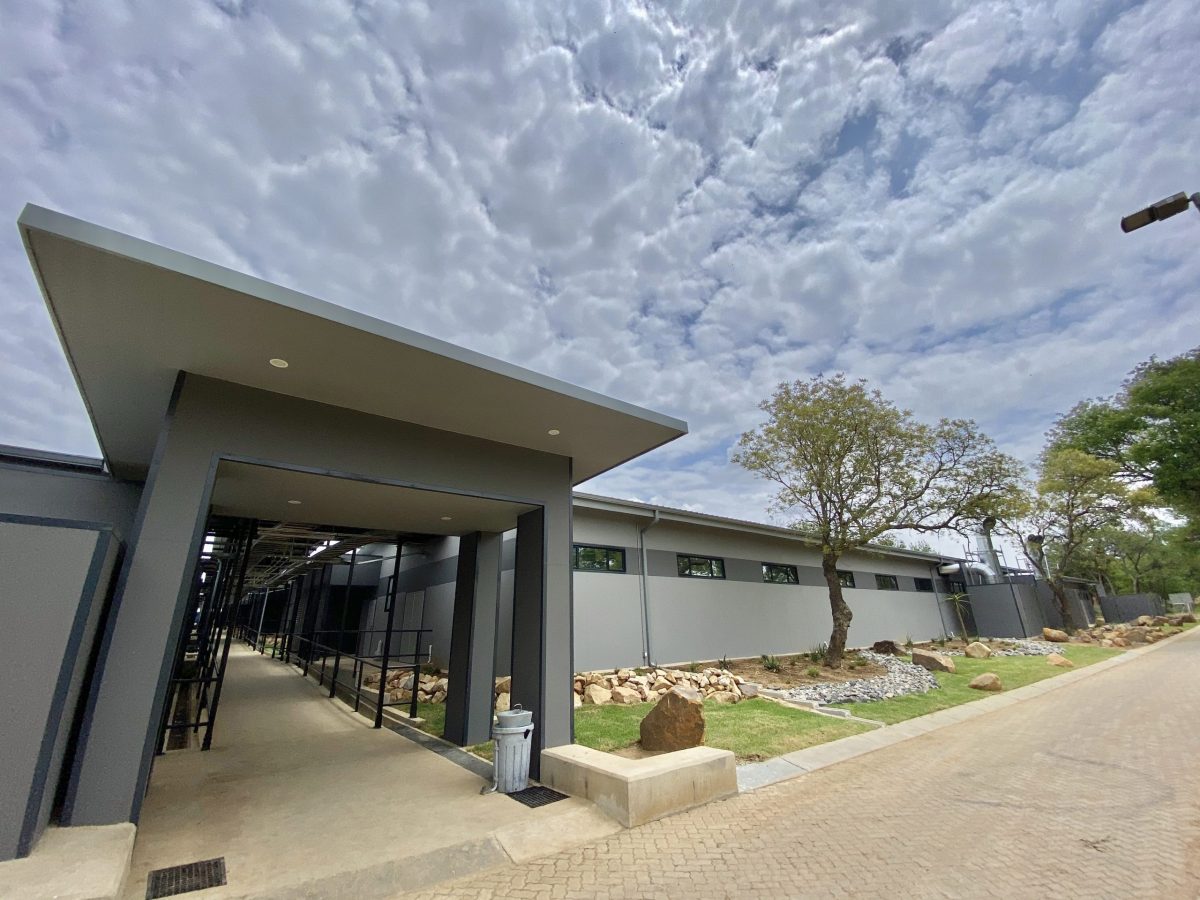
Concor successfully completed a fast-track Covid-19 facility at Jubilee Hospital using innovative building technology. This was handed over on 27 November 2020, having begun work on site some five months earlier.
The turnkey project in Hammanskraal north of Pretoria handed over ten modular units to the Gauteng Department of Health, adding another 300 beds to care for Covid-19 patients. The facility comprises five 25-bed intensive care unit (ICU) modules – complete with a two-bed isolation ward – and five 35-bed high care modules.
According to Rui Santos, senior contracts director at Concor, the company already started completing modules from mid-October (excluding commissioning). The modular approach was chosen so that units could be completed and put into operation while others were still being constructed, if the need arose.
“This has certainly been a demanding project in terms of its timeframe,” Santos says. “However, by applying the appropriate technologies alongside our extensive experience, we met deadlines while complying with national building standards and without compromising safety or quality.”
Neither did the Covid-19 lockdown regulations slow the project down. Almost all the required meetings and collaboration before and during the project were conducted remotely, with all players fully committed to the new ways of working.
The brief from the implementing agent – the Gauteng Department of Infrastructure Development – called for alternative construction materials to reduce the timeframe of the project. After considering different options, Concor decided on Futurecon’s light frame steel with prefabricated panels.
“To assist in the fast-tracking of the process, the panels are cladded on site and were quickly followed by roof truss installation,” Santos says. “This opened up the opportunity to get the services installed much earlier than would have been possible using conventional brick-and-mortar methods. This process was facilitated by a specialised team making up the frames on site and erecting them there and then, allowing greater control of sequencing and pace of work.”
The project schedule was maintained from earthworks stage despite encountering poor ground conditions, groundwater, existing buildings and large boulders in some areas of the site. Various underground services also had to be located and rerouted before the raft slabs could be cast.
“A flexible working approach served us well under these conditions,” he says. “Where our ground preparations demanded more time, we were able to refocus activity on another cluster – making good progress elsewhere to keep everything on track.”
The ICU and high care modules each consist of two separate wings with a central nurse’s station, sluice and ablutions, with central utility areas for offices, storage areas and waiting area. It was vital for the rapid roll-out of the project that the appropriate wet services and ventilation systems were selected (see sidebar), to allow all mechanical services to be commissioned on a standalone basis. They also needed to accommodate future expansion as required.
The design brief incorporated a combination of field hospital standards and the usual Infrastructure Unit Support Systems (IUSS) requirements. According to Courtney Hart, architect at Osmond Lang Architects & Planners, the new modules were also designed with their future use in mind – providing a lifespan beyond the Covid-19 pandemic.
“While satisfying the need for a 300-bed Covid-19 facility, the facility can be used for more general hospital purposes going forward,” says Hart. The current design prioritises the intensive care that Covid-19 patients will require, and the ways that clinicians must conduct their procedures, including visual and physical access to the patients. Compliance with the various national standards was ensured as a matter of course, including SANS10400 regarding energy use and SANS10252 for water supply and drainage installations.
Keeping up the speed of construction meant implementing a double-shift schedule, ensuring work continued almost 24 hours a day. To maintain the necessary momentum, Concor strengthened its core complement of employees, making for an on-site workforce at peak – including subcontractors – of 350 to 400 people. Moving materials and panels was facilitated with a couple of telehandlers, but the results were achieved with little need for specialised construction equipment or cranes.
More news
- PART 2: DESIGN AND CONSTRUCTION OF SLAB-ON-GROUND: APPLYING ACI 318
- DESIGN AND CONSTRUCTION OF SLAB-ON-GROUND: APPLYING ACI 318
- DOK-ING’s innovative electric mining equipment unveiled at ElectraMining
- CONCOR’S MASTERY IN FAST TRACK PROJECT IMPLEMENTATION UNDERSCORED BY SAFETY AWARD
- PROMINENT SEA POINT HOTEL REFURBS WITH REHAU

